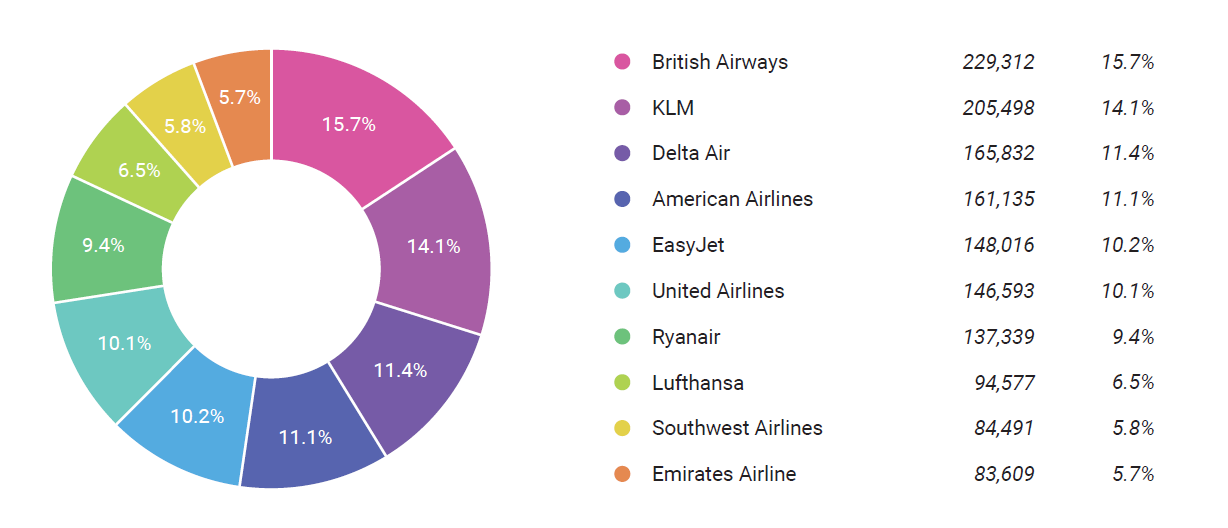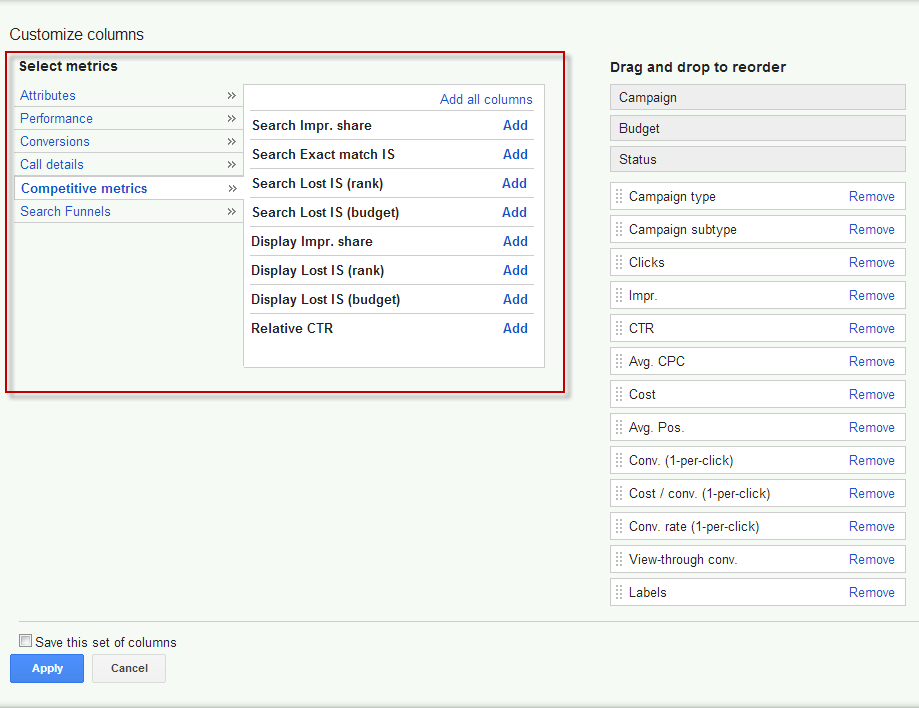Digital marketing opened up a lot of new exciting ways to promote our brands and products.
But it also increased the number of metrics we need to track.
It can even become a bit overwhelming to try to keep an eye on your brand health, brand awareness, traffic, ROI from ads, conversions, etc.
In addition to that, you need to understand how all these numbers look in the broader context, compared to your competitors.
Otherwise, you’re trying to manage your business blindfolded.
Luckily, there’s a metric that illustrates exactly that: your place on the market.
The share of voice metric is a great starting point for mapping your industry and can be a source of comprehensive competitor insights.
What Is Share of Voice?
This article is about digital marketing, but the term “share of voice” (or SOV) has been in use way before the dawn of the digital age.
Traditionally this metric described the share of your advertising (print, radio or TV) compared to all the competitors’ in your niche.
Nowadays, the term was expanded to include all forms of measurable brand awareness such as the number and reach of online mentions, PPC, website traffic, and more.
Digital marketing allows for more precise calculations since it’s much easier to determine and track your competitors online.
If you’re using the right tools, you should have no trouble calculating SOV even if you’re new on the market.
Basically, share of voice helps you understand how popular your brand is compared to all your competitors.
While being an incredibly useful metric in itself, it’s been proven that a brand’s share of voice tends to correlate with its share of the market and revenue.
That way, by determining your rivals’ shares of voice, you get some pointers on how much profit they make.
Besides benchmarking your financial success against your competitors’, what are some other reasons to calculate your share of voice?
Why Should You Measure Share of Voice?
Knowing your share of voice is a great place to start when figuring out your company’s position on the market.
This metric shows you where you are currently, where you could be, and how to get there.
Share of voice is an incredible metric for benchmarking your success against your competitors, but it’s more than that.
There are many marketing areas where this metric could become useful.
If you go behind simply looking at the numbers, you can discover valuable competitor insights and improve your marketing efforts.
Share of voice not only shows you your place on the market, but it can also tell why this place is yours if you just pay attention to your competitors.
Here are all the birds you can kill with one share-of-voice-calculating stone.
Brand Management
Brand awareness is probably the first thing that comes to mind when we ask, “What can share of voice tell us?”
By tracking your online mentions and PPC you can see:
- How many people know your brand.
- How often they come across it online.
- How much they talk about it.
Campaign Tracking
You don’t have to limit measuring share of voice to your brand only.
If there are several campaigns running on the market at the same time (and there always are), you can calculate SOV for them as well.
You can also tap into different audience-specific insights segmenting them by:
- Country.
- Language.
- Social media platform.
- And more.
Doing this regularly will help you understand what resonates with your audience and what elements from your competitors’ campaigns could inspire your own.
Consumer Insights
Speaking about resonating with your audience, tracking SOV can also help you discover unexpected information about your consumers.
Online share of voice is based on the real conversations and behavior of Internet users, as opposed to traditional share of voice that is simply based on the number of ads.
So you can use it to draw conclusions about your audience.
Exploring the specific conversations happening around the brands of your competitors can give you product inspiration and help improve your company.
Public Relations
Determining your share of voice in the news can show you how effective your media strategy is in comparison to your competitors’.
- Are there any outlets that cover your competitors but not you?
- What kind of stories do media gravitate towards?
These questions could be answered by exploring mentions from the media collected when calculating your share of voice.
This is just a handful of ways to use SOV as the first step to comprehensive market research.
Now that you know why we should calculate it, let’s get down to the actual business of working out your share of voice for online mentions and PPC.
How to Measure Share of Voice

No matter what area of marketing you’re focusing on, the general formula for calculating share of voice is:
SOV = Your brand’s measures / Total market measures
Now, the measures you use to calculate your SOV depend on your goals.
This article will cover three major areas that you should keep an eye on:
- Social media and blogs.
- Online media outlets.
- PPC.
To calculate values for most of this, you’ll need help from some digital marketing tools.
Share of Voice on Social Media

Social media mentions could be named the only “true” share of voice metric since it’s the voice of customers we are measuring here.
Social media allows you to find out how often people talk about you organically.
There are two ways to calculate share of voice: manually and with a paid social listening tool.
The first method still requires you to use a media monitoring tool, but here you can get away with using a free one, such as Social Searcher.
It will allow you to calculate the number of mentions for each competitor, but won’t give you more advanced analytics such as reach, sentiment, influencers and more.
Here’s what you need to do:
- Open the tool and put in the name of your brand.
- Write down the number of mentions collected by the tool.
- Do the same for your competitors.
- Calculate your share of voice using the following formula: (number of mentions of your brand/total number of brand mentions (yours + your competitors’) x 100 = SOV. You can use this Google Sheet as an example.
This method comes in handy for when you need a quick evaluation of your share of voice, but it has its downsides.
- Free social media monitoring tools are not very precise and don’t cover some major social media networks.
- They don’t provide users with detailed statistics.
- You can’t use them to track the changes in your share of voice over time and see the patterns of (hopefully) growth.
To dive deeper in your social share of voice and derive valuable insights from it, you can use a social listening tool.
To determine your share of voice, you need to create social listening alerts for you and your competitors and compare them.
A social listening alert is a keyword or a set of keywords, in this case, it can be the brand name and the social media handles.
You want to know the major differences between you and your competitors, such as:
- What platforms work for them.
- Who has a bigger share of positive and negative mentions.
- Where they are popular.
- Which influencers talk about them.
Share of Voice in the Media
If social media share of voice is the voice of the customer, share of voice in the media could be called a “voice of the industry” metric.
It shows how established your brand is in the eyes of the industry pundits and your peers.
Calculating SOV for online media is especially useful for evaluating your PR and content strategy and finding new outlets to focus on.
Most social listening tools crawl news websites and blogs, so you can use the same tool for calculating share of voice on social media and in the media outlets.
The workflow is pretty much the same, you just need to limit the sources of mentions to news and blogs only.
Share of Voice for PPC
Traditionally share of voice was used to calculate your share of advertisement, so it’s only logical for digital marketers to count your PPC share of voice.
Fortunately, it’s easy – all you need is to check out your Google Ads statistics.
The metric that is equivalent to the PPC share of voice is Impression Share (i.e., the share of times your ads were shown in comparison to the number of times your ads could have been shown based on your keyword and campaign settings).
The formula Google uses to calculate Impression Share is:
Impression share = Your impressions / Total eligible impressions
The eligible impressions are calculated based on the number of factors including targeting settings, approval statuses, and quality for you and other participants in the same ad auctions.

You can access this metric by going to the Campaigns tab of your Google Ads account.
Here you can add the Impression share metric to your stats by clicking Modify columns > Competitive metrics and selecting IS.
The Takeaway
Share of voice is a much more complex metric than it used to be, but also a much more rewarding one.
By calculating SOV for different areas of your digital marketing strategy and segmenting it further based on data analytics, you get more than a jumping-off point for business strategy.
You actually get an in-depth look at the current state of affairs for your company and the market in general.
The insights you discover can be then used to support your product and marketing decisions.
And tracking the changes in your share of voice over time will demonstrate the impact of these decisions.
More Resources:
- Content Marketing KPIs: Your Guide to Picking the Right KPIs for Content
- Digital Marketing ROI: 11 Metrics You Must Understand
- 15 Important Conversion Metrics & Business KPIs You Should Track
Image Credits
All screenshots taken by author.





